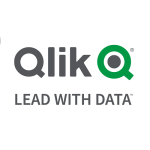What is our primary use case?
I have taught and mastered many desktop tools, including Power BI, for the purpose of prototyping designs for business intelligence and data warehousing. Currently, I am teaching data analytics at graduate level and Power BI is on my schedule.
We teach tools like Power BI by going through common scenarios in a business intelligence environment, which most often deal with the factual numerics that get designed into a sales force reporting dashboard or similar solution, showing details like order placement, orders shipped and paid for, etc. The templates for these typically use a style of diagramming called star schema, which is a common dimension modeling technique.
I can't say whether it's the most frequent real-world use case that a real customer would focus on, but for the level of our tutorials, a sales scenario might involve a description of customers, products, locations, maybe geography, and the timing of sales for trends analysis.
Other than Power BI, I also teach AWS and Azure, where I help guide students to plan and come up with architecture for deploying to the cloud. It's not actually very hands-on, as it's more to help with architecture diagramming for the intentions that students have when using them. And at our institution, all of our courses last only four weeks, so it's very fast tracked, which sometimes means that we don't really go too in-depth.
AWS has a lot of samples and diagrams, including many graphics that are fairly artistically detailed. The level at which I've helped students reference those kinds of diagrams is mainly for their team projects, to illustrate their intention, for example, to deploy a database into AWS. If it's an SQL Server database, we usually choose Azure. But it's not to actually do it. It's rather to have the intention to, for illustration purposes.
How has it helped my organization?
I had a brilliant student in May last year, 2019, who did her graduate capstone project - where I was her advisor - using Power BI. And she has two times now responded to my invitation to be a guest speaker on that tool to classes such as the data analytics class that I've been teaching for about 20 times now, going back six years.
At my institution, I'm the only one teaching database design, whether undergrad or grad, and I found Power BI was a very attractive tool to introduce during the database design class, and then later enable the students to use it for their capstone. Unfortunately, it didn't work out in November this year, because few of the students picked up on it and gave the actual time it would take to focus their attention on using Power BI templates.
Overall, my observation is that the enrollment is way down and the students who are still in the program are very distracted, I think because of the pandemic. Despite this, Power BI has helped me introduce students to business intelligence and data analytics because it's a very attractive and cost-effective tool (there's no cost to it, it's free).
Another reason I'm inspired to focus my time on helping students with Power BI is because of the analyses done by the Gartner Group and Forrester Research, wherein they reviewed the strengths of Power BI. Both of them call it a "killer app". That caught my attention. And Power BI seems like the best thing to suggest to the students.
And I'm up to it on my side teaching through online, although I'm regretting that I cannot go on a campus to be still there for the students whose strong preference is to be together in a room learning on site. I hope that in the class in May, there'll be more people really interested in actually using it. In November, I was hoping some of the students would, but for reasons such as the pandemic, these online students have too many distractions. Especially if they're also still working or they have families with kids at home.
What is most valuable?
What Power BI is, is a whole collection of templates of small amounts of data that can be used to do something for a real world project, that can be easily set up and become the business intelligence environment or a data warehouse for a large amount of data, for a real world customer. That's what is remarkable. And that's what it takes.
It makes use of the ordinary things, and they'll sound familiar. Excel, Access, or SQL Server as the database, and the deployment techniques like Azure for it to be in the cloud.
It's very heavily like Microsoft promoting its own products, but I forgive it because this time it works. And I'm speaking from some experience; I worked in the data warehouse technology group at Oracle for three and a half years, and I was helping Oracle's clients put up a data warehouse with Oracle as the database, and to migrate data into the Oracle database. So that was my background. And for me to be persuaded that this collection of regular, already known, already used desktop tools could work just as well, but with the added value of the samples, the templates, frequent updates, and lots of support. That says a lot.
It also has other features that I like, especially regarding the designs in the set of templates for things that would perhaps be very puzzling to somebody doing it for themselves. It has pre-built tables to hold, during project lifestyle, maybe a small select amount of test data with the intention of the large amount of data going into production after deployment. And it has all the table designs that start out generic but that can be easily customized.
What needs improvement?
When it comes to improvement, I would say there could be more tutorials for students in universities who are just learning it. And it wouldn't have to be just for students in universities. It might also be for the people who use it in the real world.
The evidence that I see when I look into it is there's a lot of user group type of connections to the Power BI world. And many, many bloggers telling their stories and promoting themselves or small businesses promoting themselves to do it for you using Power BI. The claim being that they could help you get it done instead of you doing it yourself. That's what goes on in this industry. You see a lot of entrepreneurial people who want to work in the role of consultant and get paid for it. There's a lot of that.
And the invitation to look into the websites comes from little mini tutorials, which can be very helpful. But the next step of those tutorials, if most of the people get what they want out of them, is a contract to do the work. I don't want to introduce those kinds of things to my students, because it's kind of promoting something that could be a distraction.
I worked for years as an independent consultant. I even did a fairly long series of contracts up in the state of Washington at Microsoft and I had 38 years in the industry before I became an academic teacher. But I'm avant-garde when it comes to sales. I avoid salesman because I don't want to believe the hype. I don't want to be deceived. And I don't want to suggest that somebody go that way. The topic of sales is overdone. This is an opinion on my part.
On a practical note, the process of importing data into a new environment that has recently been designed is always a major effort. And Power BI has some weaknesses when it comes to loading data into an otherwise good concept and a good design because if it's not seriously tested and all shortcomings noticed beforehand, the importing process will fail.
Even a cool tool like Power BI cannot anticipate the complexity of the variety of sources of data. But they're not alone. That would not be a disqualifier. But because I don't have direct yet, hands-on, having done this, I don't really know how Microsoft would improve this area.
I think they've got it handled on integration. Everything that you're working with is already a Microsoft environment or a Microsoft tool. It's integrated. But if you're using the desktop tools by Microsoft and you need to deploy into a backend of Oracle, there might be some things that a smart consultant has to help out with. So cross-platform integration could use some improvement in terms of ease-of-use.
For how long have I used the solution?
I have used Microsoft BI in my data analytics classes for a few years now.
What do I think about the stability of the solution?
In an abstract sense, it's holding up. I don't speak to actual customers of Microsoft products to answer that question. But I would suggest that it's holding up because the Gartner Group put out another magic quadrant output that describes it as being in the leader category.
It's a well-respected research group, Gartner. In fact, companies that want to acquire its research for anything more specific or consulting, have to pay for it and have ownership. I don't pay for it. But there are many vendors who have my school email on their lists, so I get the reports for free, and I have my hands on quite a collection of the reports.
And that's why I'm mentioning them because the Gartner Group has mentioned Power BI twice now. So as far as long-term prospects go, I'd say Power BI is a stable solution.
How are customer service and technical support?
Microsoft provides frequent updates and a lot of support for Power BI.
Which solution did I use previously and why did I switch?
I have worked in the data warehouse technology group at Oracle for three and a half years, helping Oracle's clients deploy a data warehouse with Oracle as the database. But when Power BI came onto the scene, I was more and more persuaded to use it instead for business intelligence and data warehouse purposes. This was mainly because I enjoyed how easily Power BI builds on existing tools that I'm already familiar with like Excel and Access.
How was the initial setup?
The setup is straightforward, because it exhibits itself within familiar tools, like spreadsheets.
The complexity comes when you try to convert from simple beginnings into something that needs to eventually become reality. But I'm guessing. I don't know that it's complex. And anyway, I personally like complex. It attracts my attention.
What's my experience with pricing, setup cost, and licensing?
For my primary use case, i.e. teaching students, the free version of Power BI is adequate.
What other advice do I have?
May is the next time I'll be teaching the data analytics class, the graduate class, and I will be actively trying to promote Power BI for the team project.
I would rate Microsoft Power BI an eight out of ten.
Disclosure: My company does not have a business relationship with this vendor other than being a customer.
















